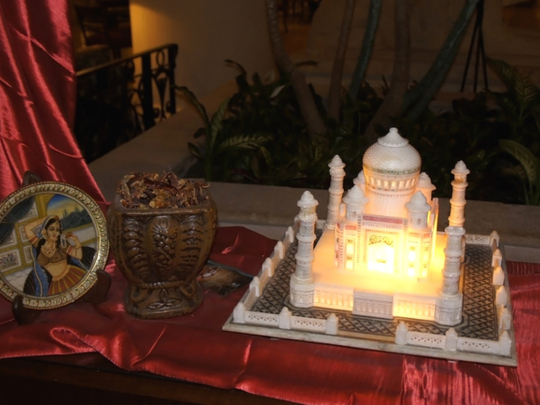
Right from my childhood, I had a penchant for miniatures. Whenever I saw some mini-version of something, I felt like possessing it. If it was not possible, I tried to replicate it with my own hands. Because I must have it, come what may. The trait continues even after more than seven decades.
Among the few objects that clicked in my brain to create as a miniature piece was the Qutub Minar. I had only seen its photograph in some book. But it was around 1949 when my family took advantage of being in Delhi for a marriage and visited the famous monument. Those days, the minaret was open to visitors, but entry was later banned after a few cases of suicide. I remember having climbed up to the top storey hand-in-hand with my siblings. We were gasping for breath yet enjoyed climbing every step which narrowed as we moved up.
After coming down, I had another good look at the monument — of course, from a distance — because I had to replicate it. What could be a better material than chalk sticks that I brought from my school to carve out a Qutub Minar. Fortunately, I got a couple of brown pieces to match the monument’s colour. It took me two to three days to etch out a mini-version. I broke some sticks in the process.
Though the little Qutub Minar was not an accurate representation of the original, it gave me great satisfaction. It got admiration from my art teacher and several schoolmates who wanted it to remain in the department’s display shelf. But I brought it home to adorn my cupboard.
The next piece was a mini Taj Mahal, which was carved out of soft chalk and chalk sticks. It required the use of a kitchen knife and compass-divider from my geometry box with great precision and finesse. With the help of adhesive, I placed it on a white art paper to make it look like a marble platform. The four minarets around the central structure gave me considerable trouble in creating them, but they gave a great sense of fulfilment to the child in me. The little Taj Mahal being a miniature in the real sense, onlookers had to view its intricacies from close quarters.
As I grew up, my father from whom I seem to have inherited this affinity for miniatures, helped create a railway yard on the top of a big table in our house. I used the cartons of a fountain pen ink bottles as coaches, reed-grass for rail tracks, a functional signal that showed the green light. Caps of toothpowder packs served as wheels of my mini train and its engine. A compass served as a lever to pull the signal down.
At that time, the domestic toy industry was in its infancy. Only Japanese toy railway engines were available but with some difficulty. So I had to use my fingers to push the train carefully, particularly when it passed over a bridge.
Dream project
One morning, my grandmother virtually smashed my dream project as a punishment for not giving adequate attention to studies.
But my passion did not die down. Even after working as a journalist for 15 years, in 1975, I created a mini version of the then prime minister Indira Gandhi. A small, button-sized photo of her head pasted over a beautiful saree made out of a crinkled toffee wrapper.
The craze continues even after my retirement. During visits to Dubai and Sharjah, I collected discarded bottles of perfume because some of them looked like Falcon with a golden neck ring. I had to only paste eyes on them. A few were near replicas of penguins adorning my mantlepiece.
But the caps of the perfume bottles I collected in the UAE made fancy flower pots of various sizes and shapes. They held dry flowers and stems. They are still there beautifying my living room. A friend believed me when I jested with him that such mini pots were available only at select florists there.
However, I had real fun when my mother-in-law, who always insisted on having just two sips of tea, was left speechless when I gave her a mini cup. I had purchased the Arabic coffee cup from a One Dirham shop in Sharjah.
In retrospect, I feel that every child has some latent talent which should be allowed to develop. Otherwise, the creativity would perish.
As for me, the crazy child in me continues to thrive.
Lalit Raizada is a journalist based in India.









